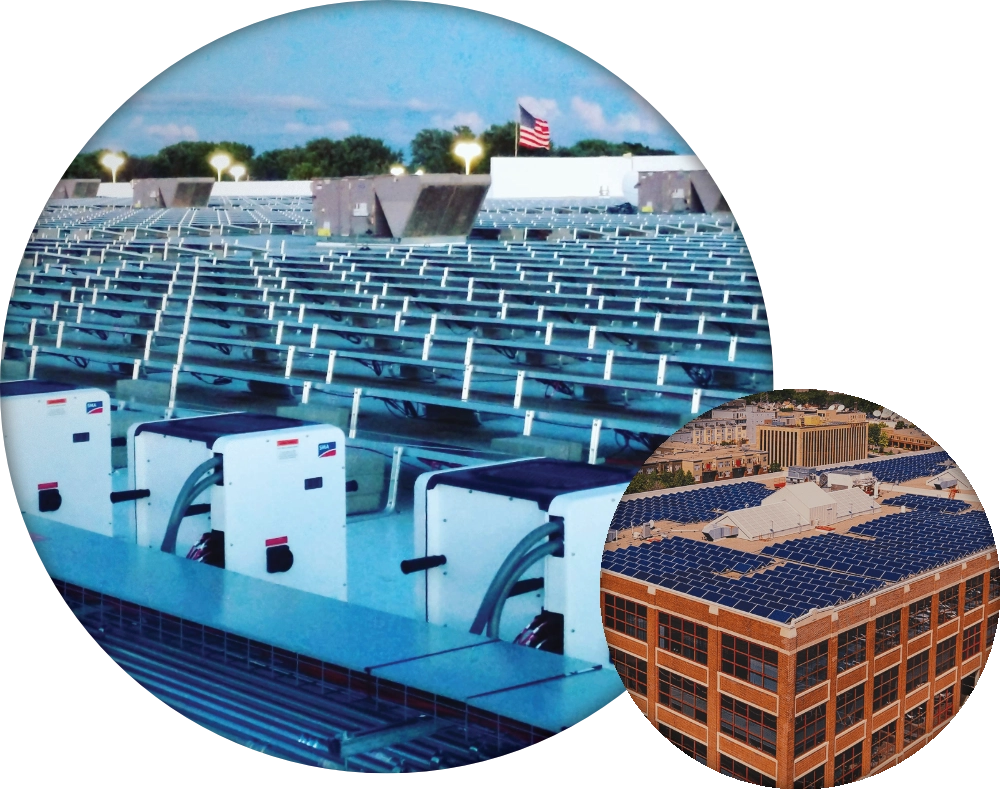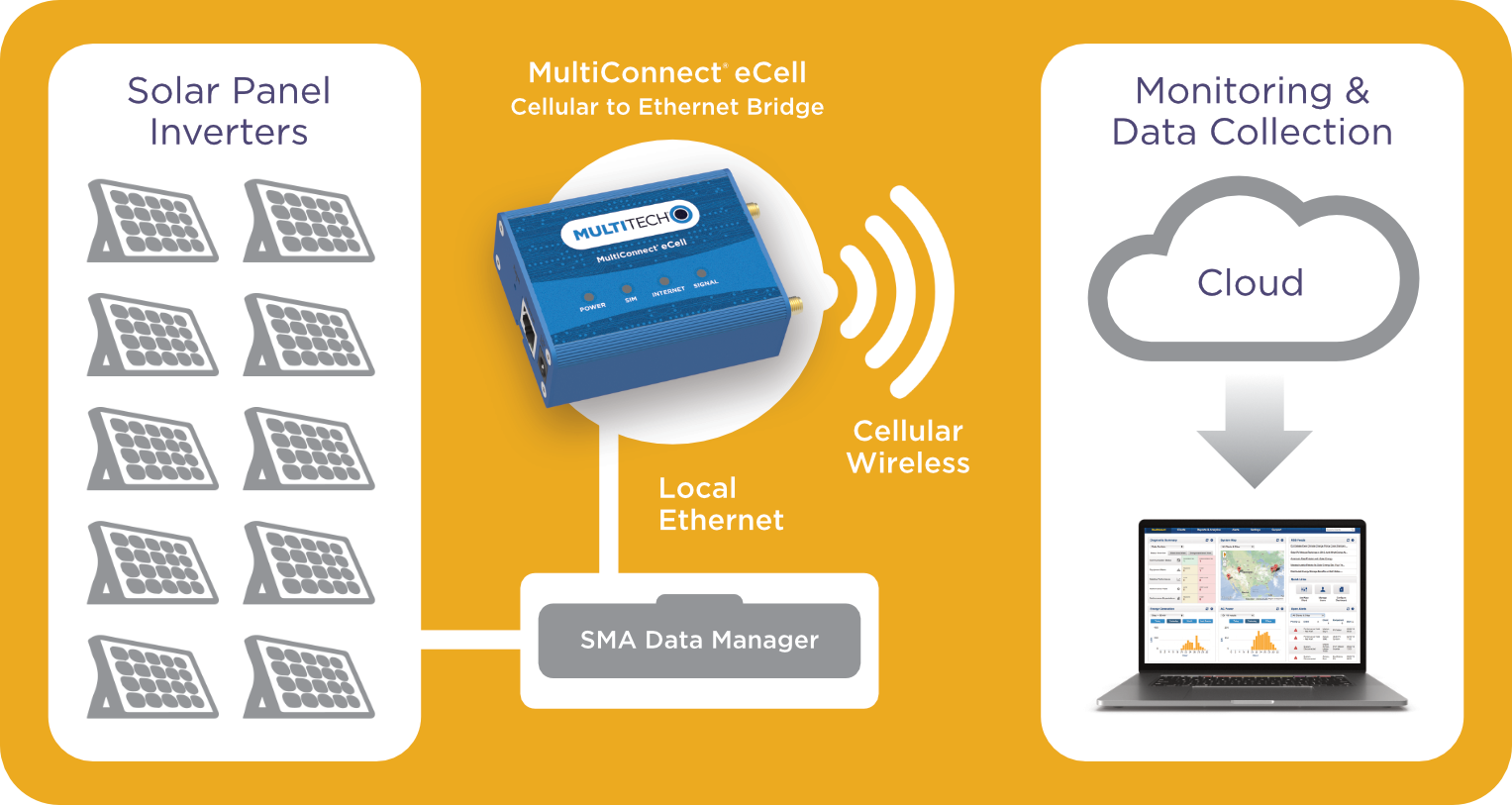Building Better Solar Power
Armed with the challenge of ensuring a bulletproof connection to these geographically dispersed invertors, IPS Solar set out to find a solution for data transmission that wasn’t contingent on pre-established internet connections.
Background
 In 2020, 43% of all new electric capacity added to the grid came from solar, the largest such share in history and the second year in a row that solar added the most generating capacity to the grid (Source: SEIA). Not all community residents or businesses can leverage solar energy on their own, so they rely on remotely located solar energy sources. These “solar farms” or “solar gardens” consist of community shared solar arrays with grid-connected owners or subscribers.
In 2020, 43% of all new electric capacity added to the grid came from solar, the largest such share in history and the second year in a row that solar added the most generating capacity to the grid (Source: SEIA). Not all community residents or businesses can leverage solar energy on their own, so they rely on remotely located solar energy sources. These “solar farms” or “solar gardens” consist of community shared solar arrays with grid-connected owners or subscribers.
While early growth for community solar installations was led primarily by three key markets – New York, Minnesota, and Massachusetts – a growing list of states with community solar programs have helped diversify the market, setting the stage for a record year in 2021. Solar providers could learn a lot from these original trailblazers that are already successfully generating power for individuals and businesses across their states. Solar power in Minnesota, for example, expanded significantly in early 2010, due in part to cost decreases of photovoltaics and favorable policies. By 2016, it began to increase even more and continues with rapid growth today. “The state of Minnesota is committed to solar power as an energy source and favorable policies within the state have further helped in promoting its value and cost savings for families and businesses statewide,” said James Wagoner, site superintendent at Minneapolis-based IPS Solar.
Challenge
Leveraging the newest technologies in solar and communications, IPS Solar, a commercial and industrial solar solutions provider, manages numerous solar gardens across MN. The data that needs to be accessed resides in solar inverters, within the solar gardens. Often considered the brains of a project, solar inverters or PV inverters play a crucial role in any solar energy system. Inverters extract the variable direct current output of a photovoltaic solar panel turning it into a utility frequency or AC energy that is fed into a commercial electrical grid or used by a local, off-grid electrical network. Capturing information from invertors is critical in garnering metrics for power usage but also in monitoring the systems for downtime.
Armed with the challenge of ensuring a bulletproof connection to these geographically dispersed invertors, IPS Solar set out to find a solution for data transmission that wasn’t contingent on pre-established internet connections. Critical factors in their decision- included cellular net coverage area; cost of data transmission; reliability of hardware and power options.

Solution
Considering many options, including hard wired fiber, IPS Solar ultimately opted for the MultiTech MultiConnect® eCell cellular to Ethernet bridge giving them the ability to add cellular connectivity to existing wired assets quickly and easily. The MultiConnect eCell provides cellular connectivity to IPS Solar’s Ethernet connected PV inverters. This allows the data to easily and consistently be sent from the PV inverters to the cloud. “Hard wired fiber or cable are cost prohibitive for the projects and MultiTech’s bridge provided us with reliable connectivity that was affordable – a true game changer,” added Wagoner
Benefits
Utilizing MultiTech’s hardware, IPS receives a fixed monthly charge through one piece of equipment with Ethernet capability that uses a standard 120v outlet for power. According to Wagoner, vendors providing similar solutions required more maintenance during testing and weren’t as reliable. Another factor in IPS Solar’s decision was MultiTech’s hardware’s ability to handle varying temperature conditions. “We need cell service equipment that can handle very extreme temperature conditions from minus 50 to over 130 degrees that need little to no maintenance.”
Outlook
For IPS Solar and other solar providers, the future is bright, but government and public support toward diversifying energy sources is paramount. “Legislatively, states need to adopt local support for the grid and generate a broader awareness to the fact that solar is a good enhancement to all energy sources including nuclear, wind and gas power,” added Wagoner. “As developers, we are cost conscious and MultiTech products not only solved our communication problems, but came at a price that we, and ultimately our customers, could afford.”
Ready to learn more about how MultiTech products can take your business to the next level? Contact our team of experts online at MultiTech.com today!
For additional information, contact: sales@multitech.com


